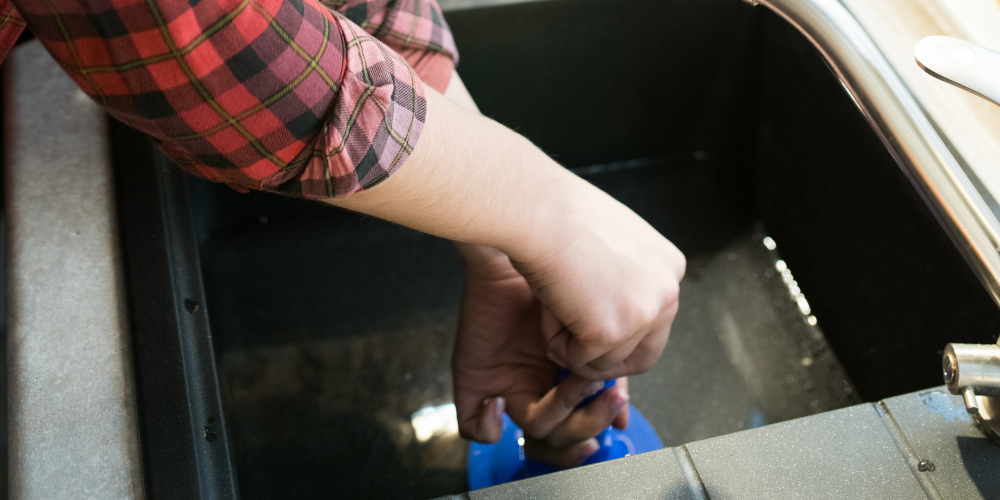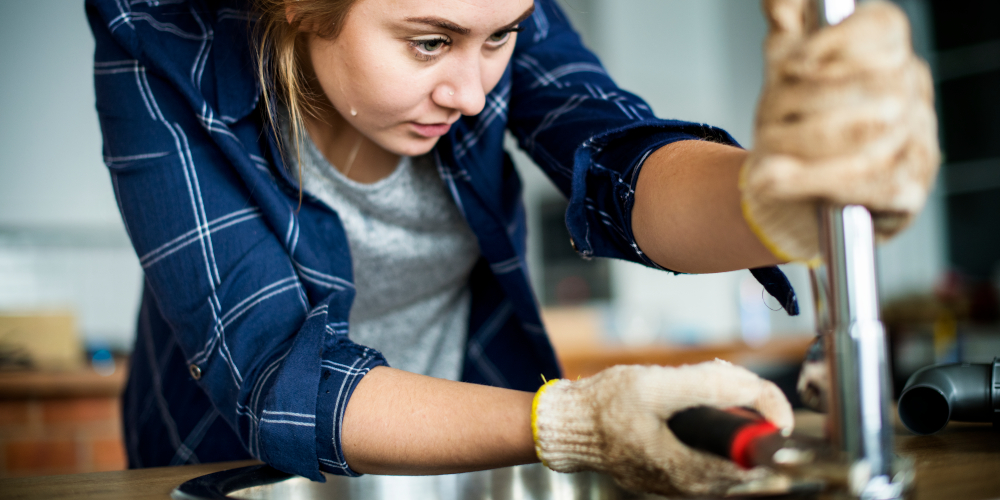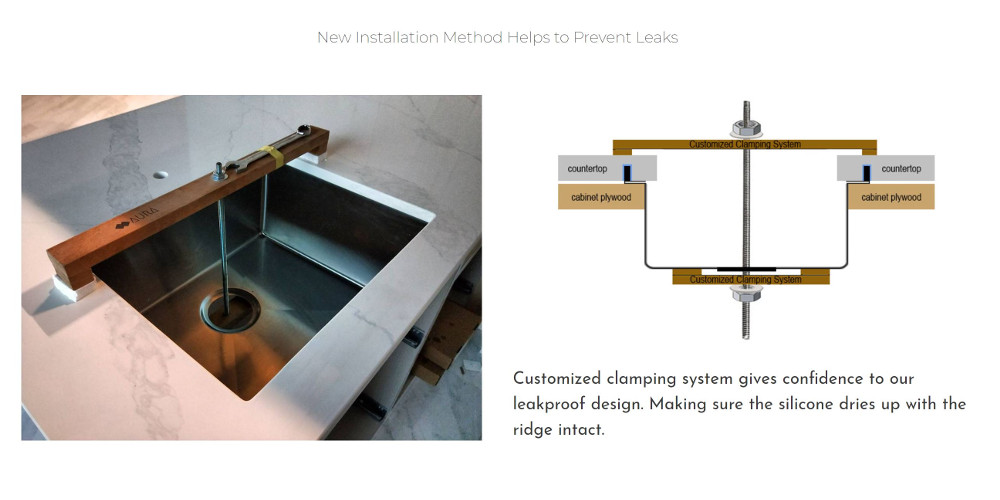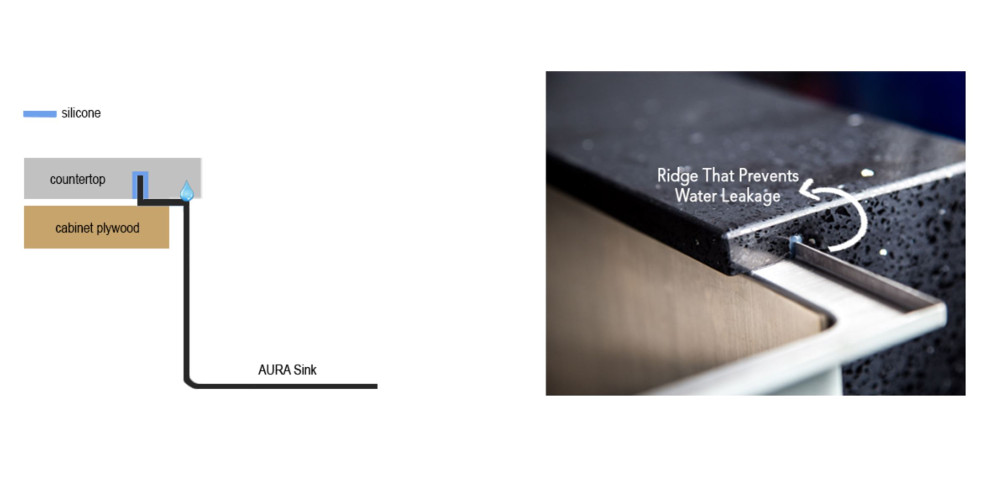A leaking kitchen sink is much dreaded by many homeowners depending on the severity of the leak. Visible and audible leakages can be sorted out immediately with professional help because you are well aware of them. But those hidden leakages underneath the kitchen sink are ticking timebombs.
Statistics show that homeowners spend an average of S$2,750 for kitchen cabinet replacements due to sink leakages. That’s a hefty price to pay for sink leakages!
To help you prepare for the next course of action, we have listed below 5 common causes of a leaking kitchen sink.
1. Clogged P-Trap

The P-trap is a curved pipe located beneath the sink. It functions as a trap to prevent any foul stench from wafting out of the drain. Bits and pieces of food waste and oils that are washed down the drain may congeal within the trap and cause a blockage. When water is unable to flow smoothly, it may result in leakages.
When this happens, you can solve this plumbing issue easily on your own by dismantling the P-trap for cleaning. Alternatively, you can try a concoction of vinegar, baking soda, and hot water to loosen out the gunk inside the trap. Of course, this works best with a plunger.
Of course, the best way to prevent this is to not throw food and oil into the drain. A sink strainer is an essential accessory to have for all kitchen sinks. Discard the food remnants into your waste bin and never into the sink drain. As for oil, there are various ways to dispose of used cooking oil without pouring it into your sink.
2. Leaking Faucet

Other than pipes, the kitchen faucet is part of the sink that may spot a leak. With constant water usage, normal wear and tear are expected due to the regular friction on the faucet components. Depending on which part of the faucet is leaking, you can gauge where the problem lies.
Below are potential causes of a leaking faucet:
Worn-Out O-Ring Seal
Water leakage at the base of the faucet is attributed mostly to a worn-out O-ring seal. With heavy use, it can wear out or expand causing water to seep out near the handle.
This is an easy fix by replacing the rings with new ones. You can purchase O-rings from your local hardware stores.
Worn-Out Washer
The frequent friction between the washer and the valve seat may eventually wear off the washer. Other than that, it could be cracked, dried up, or coated with mineral deposits. These damages allow water to seep through.
When this happens, you will need to replace the washer. Remember to purchase the right washer size according to your faucet type.
Damaged Valve Seat
A valve seat is where the washer comes into contact with each time you turn off the tap. The compression of the washer against the seat will restrict the flow of water from coming out through the spout.
If you have replaced your washer, and your sink is still leaking, then the problem could be the valve seat. There are many reasons why the seat is damaged. The damage could be caused by the defective washer grinding against the seat and causing it to be uneven, or a build-up of mineral residue that prevents the washer from fitting tightly against the valve seat.
For this, you can either choose to replace the valve seat using a seat wrench or replace the entire faucet.
3. Loose or Broken Pipe Connection
Another source for a leaking kitchen sink is a loose pipe connector. This is a simple fix by tightening the connecting pipes. If the pipes are still loose, it could be due to grime or sediment build-up around the fitting. The connector will tighten once they are cleaned.
However, if there is a crack in the piping connection under the sink, you will have to replace the pipe. Burst pipes can occur due to excessive water pressure. The pipe will eventually give way when there are consistent high vibrations from the water hitting the pipes. That is why it is important to check your water pressure to prevent this catastrophe.
For this, do consult a plumber. You wouldn’t want to risk a major plumbing mishap with this one. Burst pipes are a headache as it can cause a flood in your home.
4. Silicone Erosion
One of the causes of sink leakage is silicone erosion around the ridges of the sink. This is a common occurrence in traditional undermount and top mount sinks due to the installation method. The gap between the ridges provides a direct water seepage gateway when the silicone wears off.
The silicone is visible and exposed from the corners of the sink. When it starts trapping dirt and grime, you are bound to scrub the area clean. Consistent scrubbing may eventually erode the silicone leaving tiny gaps that trap water between the ridges.
This is the silent type of leakage that homeowners dread. As moisture slowly seeps into the crevices of your cabinet, mould starts to grow causing the wood to eventually rot. By the time you catch a whiff of the rotting wood, the damage is usually beyond repair.
5. Condensation at the Bottom of the Sink
Condensation at the bottom of the sink isn’t exactly a leak. However, it is a common sink issue for many households when the kitchen sink is too thin or is not insulated.
Generally, the temperature within the interior of your kitchen cabinet is warmer than the air on the outside. The greater the temperature difference, the higher the likelihood of water condensation. How does this happen?
The air contains moisture. When the warm air in the cabinet reacts to the cooler temperature, water droplets start to form. But isn’t Singapore a warm country? Where does the cold come from?
Do you have a habit of defrosting your frozen seafood and meats inside the sink? Frozen food takes a long time to defrost, and while sitting in the sink, it dramatically reduces the temperature of the sink. This causes the bottom of your sink to “sweat” when in contact with the warm air. As such, you may find puddles of water on the base of your cabinet.
Similar to item number 4, the prolonged dampness that goes unnoticed will result in mould growth and eventually wood rot within your wooden cabinet.
Some Causes of a Leaking Kitchen Sink Can Be Prevented
From the list of common causes, you can see that some sink leakages are inevitable due to normal wear and tear. while others can be prevented when you choose the right sink. There is a solution in the market today.
How Does Aurasink Solve Your Leaking Kitchen Sink Problem?
Aurasink, a proprietary of Aurastone, is Singapore’s first leakproof kitchen sink. This revolutionary kitchen sink has 3 main features that target problematic issues that even the plumber cannot fix.

Firstly, Aurasink utilises a unique clamping system to tightly secure the sink to the countertop until the silicone dries completely. Once the silicone hardens, it creates a water-tight seal restricting the water from seeping into ridges.
Next, Aurasink has created an additional ridge installation. Unlike normal sinks where the silicone is exposed, the Aurasink ridge is not visible. Hence, you can clean all corners of your sink without scrubbing off the silicone layer because it is hidden within the countertop.
Lastly, Aurasink is a fully insulated kitchen sink. This takes care of the “sweating” issue underneath the sink.
With a leakproof sink like Aurasink, you can exorcise the haunting of unseen leakages and safeguard your kitchen cabinets from a leaking disaster.
If you are looking for a long-term solution for your kitchen that boasts function and style, Aurastone offers kitchen sinks in different sizes and a wide variety of beautiful kitchen countertop materials. Contact us for a consultation with our in-house experts today.


